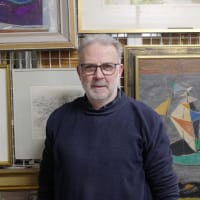
On top of the world sums up the mood in our Collections team, having recently taken custody of the gift of a major archive relating to one of our lesser-known past Members and one of the most influential sculptors working in Scotland in the earlier part of the 20th Century - Percival Herbert Portsmouth RSA (1874-1953), better known as Percy.
On top of the world also references the fact that sculptural pieces by Portsmouth occupy two of the highest points of Edinburgh’s Old and New Towns respectively. At Edinburgh Castle, work by Portsmouth graces both the north and south facades of the Scottish National War Memorial. Whilst the gilded statue of Prudence atop the dome of the Commercial Union Insurance building, on the south-east corner of George Street with Hanover Street, is an earlier work in bronze by him.
Portsmouth was born in Reading in 1874, and initially served a five-year apprenticeship as an engineer, working in the Huntley & Palmer biscuit factory. By 1892, he was a student at the Reading Government School of Science and Art. That year University College, Reading, a University of Oxford extension college, opened and by 1896 Portsmouth is recorded as a student there.
In 1898, Portsmouth was awarded a Royal Exhibition (Art) giving him three years’ free tuition at the Royal College of Art (RCA) in London. Whilst at the RCA, he spent some time in Paris and Brussels before completing his training under the sculptor Edouard Lanteri (1848-1917). In 1902, Lanteri published Modelling: A Guide for Teachers and Students, which quickly became a standard text on modelling, based heavily on his lecture notes and teaching practice.
From the RCA, Portsmouth spent a year as an Assistant Teacher of Modelling at the Dublin School of Art before securing a role as the Head of Modelling at the Edinburgh School of Art in 1903. In 1907, the foundation stone of the new Edinburgh College of Art was laid, and the staff of the new facility were appointed. The first incumbent as Director was Frank Morley Fletcher, and Portsmouth had been appointed the first Head of Sculpture by the time the College opened in the Autumn term of 1908.
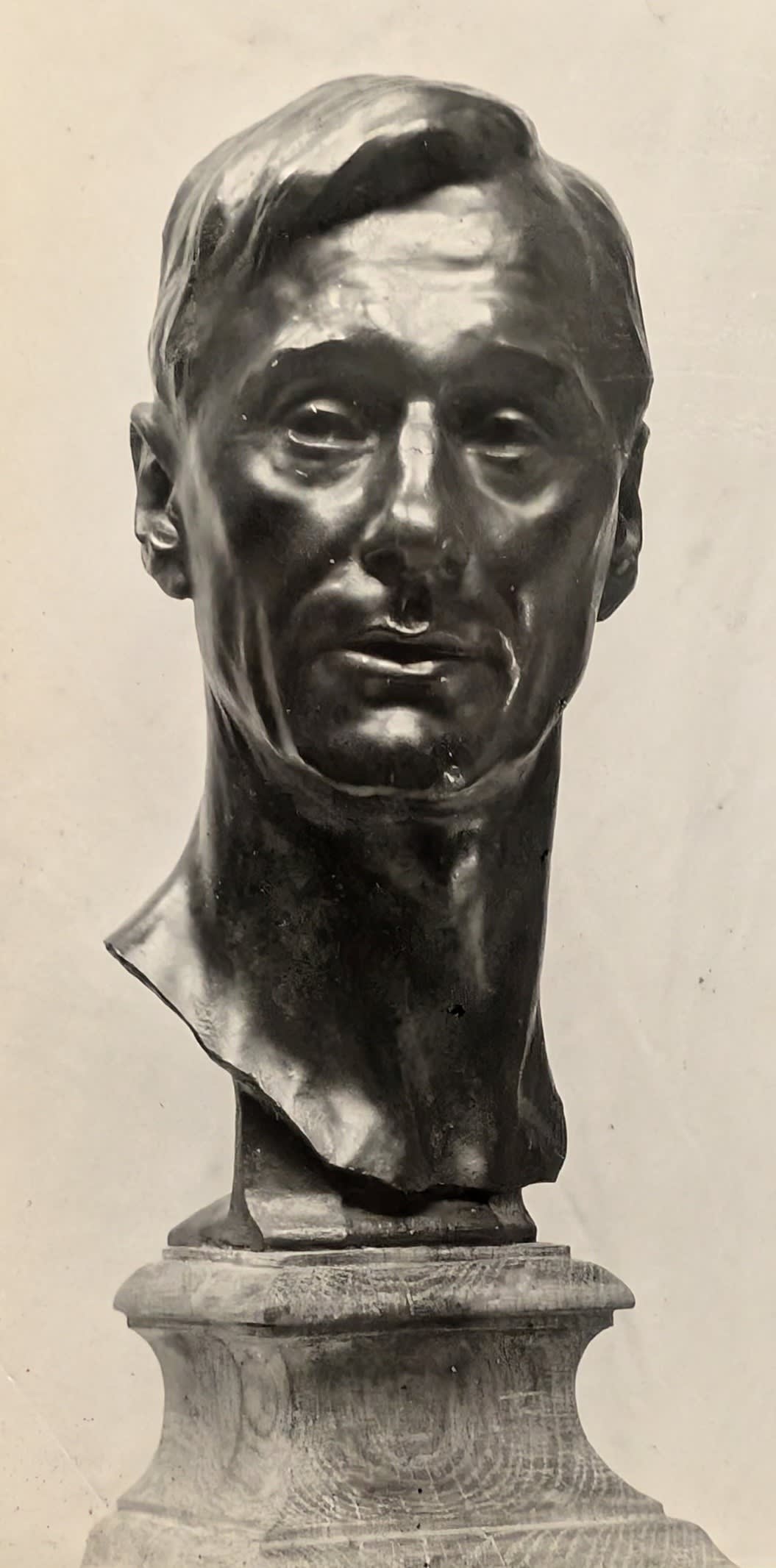
Frank Morley Fletcher, first Principal of Edinburgh College of Art
Portsmouth exhibited at the Royal Scottish Academy from 1903 until 1953. He became an Associate Member in 1906 and an Academician in 1923. He also exhibited regularly with the Royal Academy, the Royal Glasgow Institute of the Fine Arts, the SSA and the Aberdeen Artists Society. His sculptures reflect the influence of his tutors, they are highly refined technically and superbly modelled. In broad terms they fall into the category of traditional and classical figurative work with a lineage traceable back to the work of the Ancient Greeks and Romans.
The Portsmouth Archive was rescued by his Polish housekeeper Lona Slavicek and passed in turn to her daughter Gerda and then grand-daughter, Halina Stanley, who gifted it to the Academy. The Archive comprises a small group of original pieces by Portsmouth, including several ‘Mother and Child’ groups, a First World War Memorial roundel, the Dux Medal for the Elgin Burgh Schools, and his bronze statuette Boy at Play which was exhibited at our Annual Exhibition the year he died. In addition, we have received some sculpture-related volumes from his personal library, sketchbooks, notebooks, correspondence, certificates, his Academy Medals and a large collection of photographs mostly featuring Portsmouth’s sculptural work.
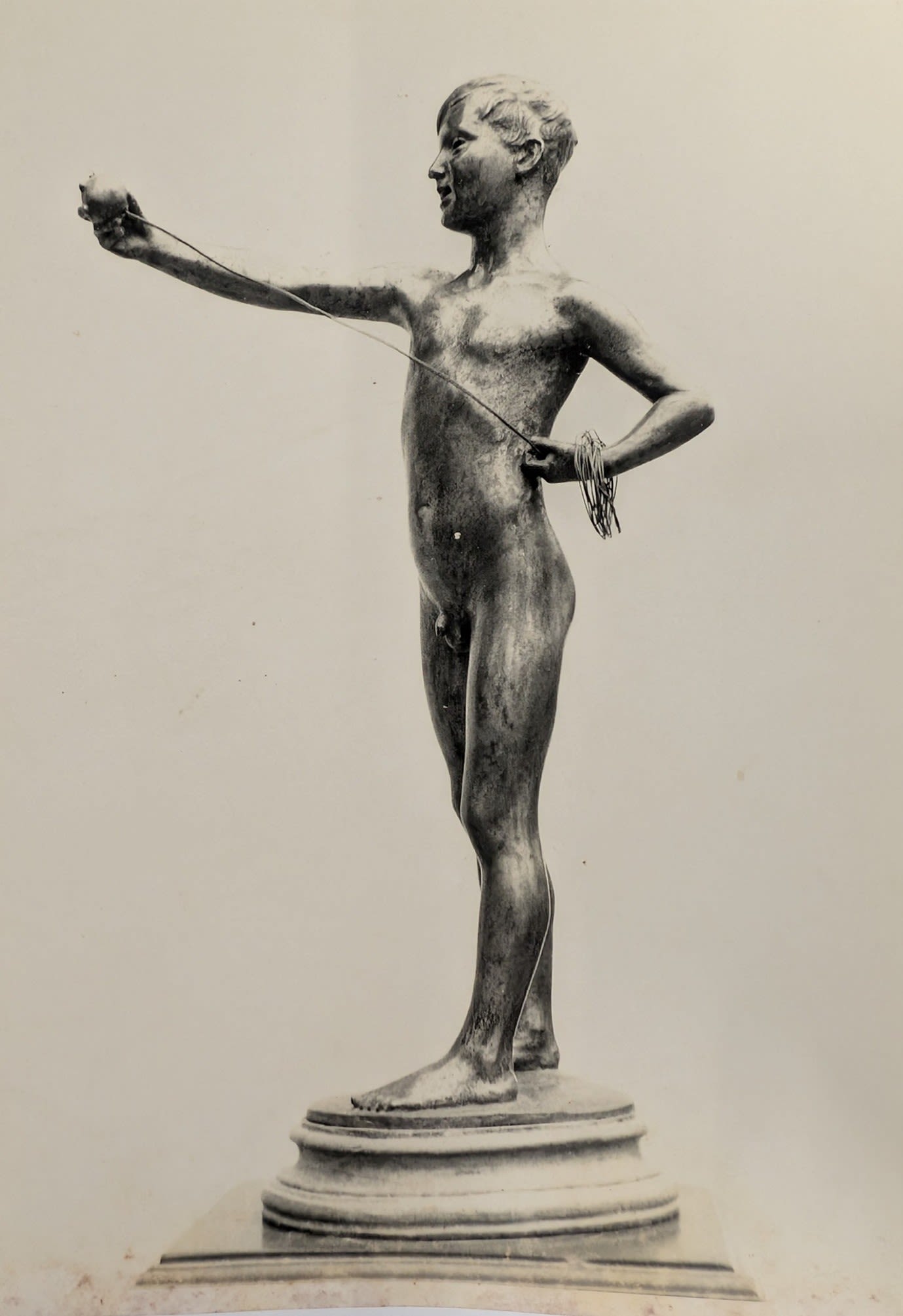
Boy at Play
An important feature of the Archive are images of five First World War Memorials designed by Portsmouth, which are sited in the North of Scotland; at Castletown, Elgin, Lossiemouth, Thurso and Wick.
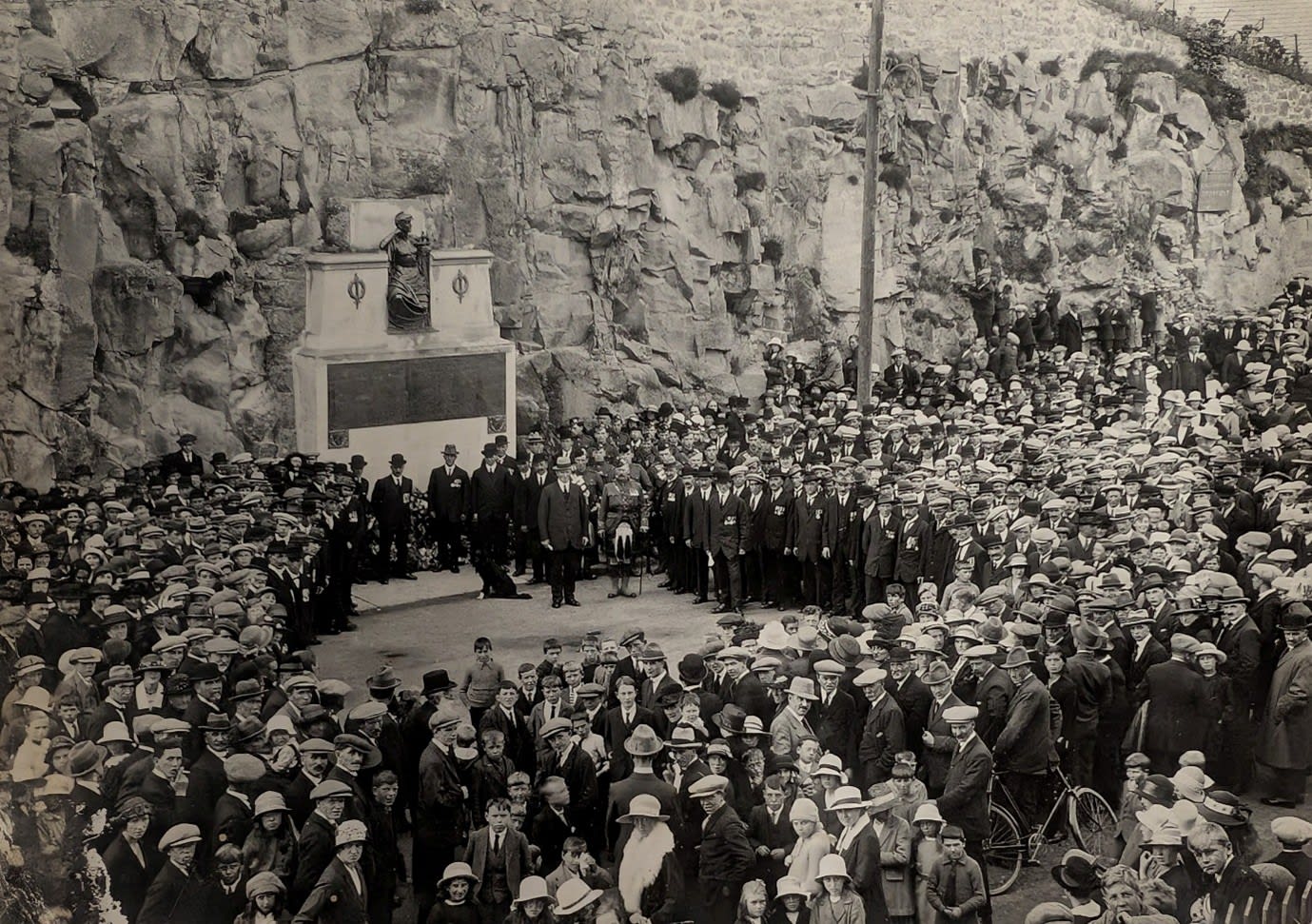
Unveiling and Dedication of Lossiemouth War Memorial
A further War Memorial by Portsmouth stands in Douglas Cemetery in Lanarkshire. Portsmouth’s work on the exterior of the Scottish National War Memorial is also captured, whilst another photograph shows an unrealised design executed in conjunction with Robert Stoddart Lorimer.
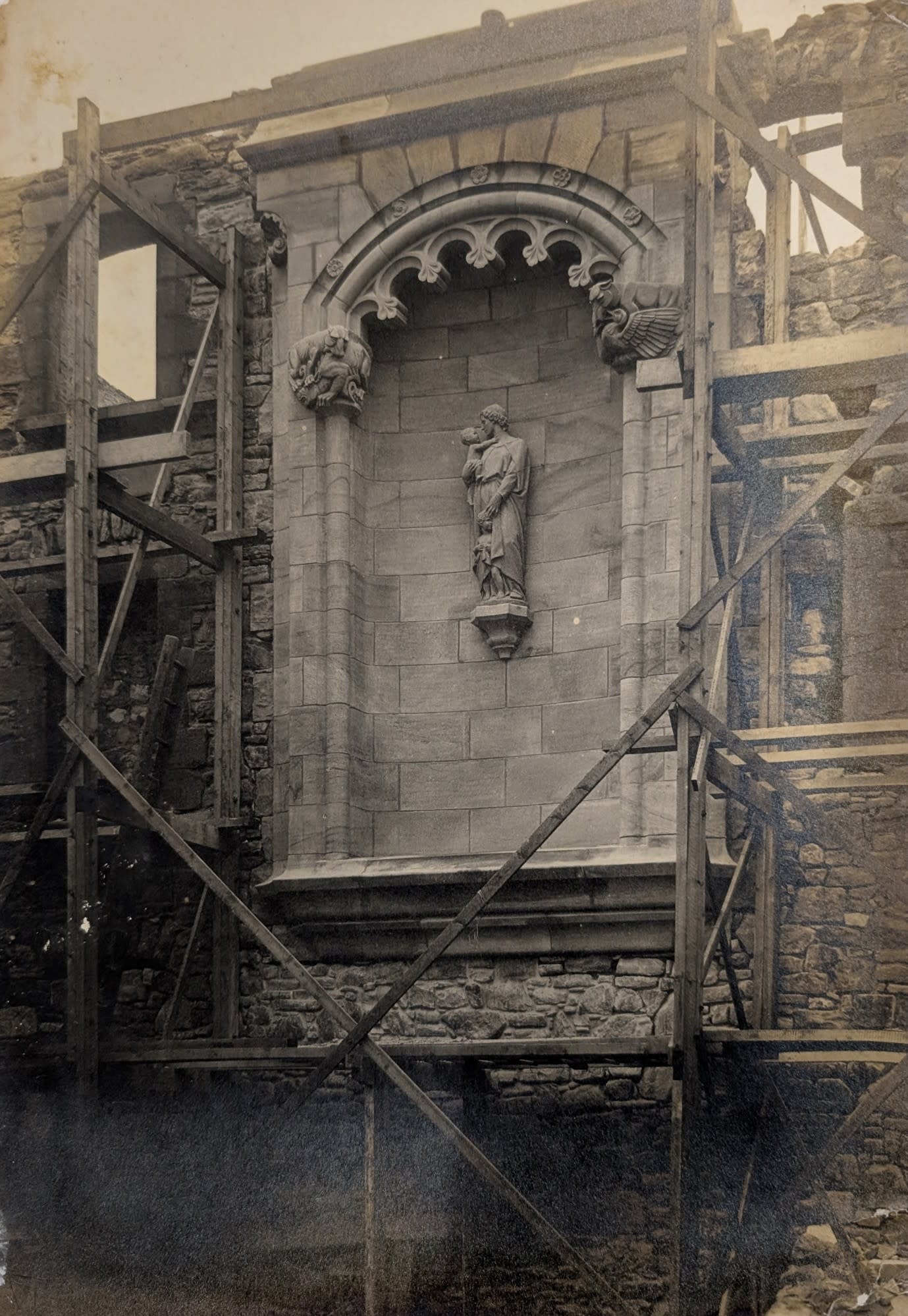
Charity at the Scottish National War Memorial
The photographs in the archive span Portsmouth’s entire career and include images of many pieces which he exhibited at the RSA, RGI and the Royal Academy in London. They show him as essentially a modeller, as opposed to a carver or constructivist, working his designs in clay or plaster before casting them in bronze or translating them into marble. We see works at different stages in their production and a number show the piece in its studio setting.
They also reveal something of Portsmouth’s patrons, including John R Findlay of Aberlour, the proprietor of The Scotsman Newspaper; Patrick Johnstone Ford, Advocate and later MP; Lady Dunedin of Stenton; Lord Glenconner; James Lewis Caw HRSA, the art historian, curator, gallery director and biographer of his father-in-law William McTaggart RSA; and The Rt Hon James Ramsay MacDonald MP and future Prime Minister.
The Portsmouth Archive has already significantly expanded our knowledge and understanding of Portsmouth’s life and work and we look forward to making it more widely accessible as it is processed.
We would be very keen to learn more about works by Percival Herbert Portsmouth RSA (1874-1953) which are held privately as we attempt to identify those photographs for which we do not know the correct title. If you can help with this, please contact us confidentially on collections@royalscottishacademy.org.

